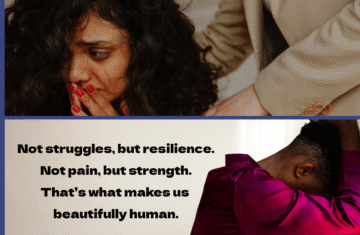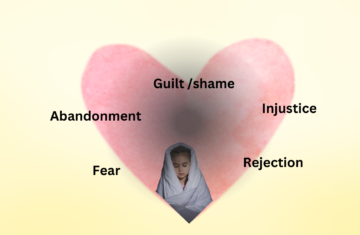We’ve all been there – that moment when someone’s words or actions leave us feeling deeply hurt. Whether it’s a comment from a loved one, a setback at work, or an unexpected rejection, emotional pain can hit us like a tidal wave, leaving us feeling raw, vulnerable, and uncertain. But in these moments of hurt, we can often find powerful opportunities for growth, healing, and deeper self-awareness.
In this blog post, we’ll explore why we feel hurt, how to process and heal from that pain, and how we can move forward with more resilience and compassion for ourselves and others.
Why Do We Feel Hurt?
Hurt is an emotional response to perceived harm, loss, or rejection. It can stem from a variety of sources, including:
- Words or Actions from Others: When someone says something unkind or acts in a way that we perceive as a betrayal or rejection, it can strike at the heart of our self-esteem and sense of belonging.
- Unmet Expectations: We often create expectations for how others should behave or how situations should unfold. When these expectations are unmet, we feel disappointed and hurt.
- Past Wounds: Sometimes, present-day pain is triggered by unresolved past hurts. These emotional scars can resurface in response to a current event, intensifying the feeling of hurt.
- Self-Criticism: At times, the greatest hurt comes not from others, but from within. Self-judgment, feelings of inadequacy, or guilt can cause deep emotional pain, even if there is no external trigger.
How to Process Hurt: 3 Key Steps
When we feel hurt, it’s easy to get caught in a whirlwind of emotions, leaving us feeling overwhelmed and uncertain of how to move forward. While we can’t always control when or why we feel hurt, we do have the power to choose how we respond to it. Here are three steps to help you navigate emotional pain:
1. Acknowledge Your Feelings
The first step to healing is to acknowledge and accept the hurt you’re feeling. It’s natural to want to avoid or numb pain, but suppressing it often leads to even greater emotional distress down the line.
Take a moment to sit with your feelings. Ask yourself, What am I truly feeling right now? Is it sadness, anger, disappointment, or confusion? Labeling the emotion can be incredibly powerful because it helps you separate the feeling from your identity. You are not your emotions; you are simply experiencing them.
2. Reflect on the Source of the Hurt
Once you’ve acknowledged the pain, take some time to reflect on where it’s coming from. Ask yourself questions like:
- Why did this situation hurt so much?
- What does this pain say about my values or needs?
- Are there past wounds being triggered that I need to address?
What Pain is Trying to Tell Us
Think of pain as a tough but loyal friend who wants us to dig deeper. Maybe our hurt is showing us an old wound that still needs care, or perhaps it’s pointing out where we need to protect our time, energy, or emotional boundaries better. Ignoring hurt is tempting – it’s a shortcut, a way to dodge uncomfortable feelings. But when we take time to sit with our pain and ask, “What’s this really about?” we often find answers we didn’t expect.
For example, say you’re feeling hurt after a friend canceled plans for the third time in a row. Sure, the immediate reaction might be disappointment or frustration, but if you look closer, maybe it’s touching on a need for consistency or trust. By seeing these patterns, we get a better handle on what matters most to us and how we can show up differently in future situations.
3. Choose Compassionate Healing
After recognizing the hurt and its source, the next step is to choose healing. Healing doesn’t mean simply “getting over it” or pretending it didn’t happen. True healing involves nurturing yourself through self-compassion and gentle care.
Here are a few ways to foster healing:
- Self-Care: Engage in activities that nourish your mind, body, and soul. Whether it’s going for a walk, practicing meditation, journaling, or spending time with loved ones, prioritize activities that promote calm and comfort.
- Express Yourself: Sometimes, the best way to release hurt is to express it. Whether through journaling, talking to a trusted friend, or engaging in creative outlets like art or music, giving voice to your emotions can be incredibly cathartic.
- Forgiveness: While forgiving others may seem difficult, forgiveness is not for them – it’s for you. Forgiveness frees you from the emotional burden of anger and resentment, allowing you to move forward with peace.
Moving Forward: Embracing Resilience
Hurt is a part of being human. We will all experience emotional pain at different points in our lives. However, it’s important to remember that pain is temporary. With time, self-compassion, and reflection, we can move through it, learning and growing in the process.
Instead of letting hurt define us, we can choose to grow through the pain. This growth comes from developing greater emotional resilience, which is the ability to bounce back from adversity. Emotional resilience is like a muscle: the more we exercise it, the stronger it becomes.
Here are some ways to cultivate resilience in the face of hurt:
- Change Your Perspective: While it’s normal to feel hurt, try to view the situation as an opportunity for learning. Ask yourself, What can I learn from this experience? How can this make me stronger?
- Set Healthy Boundaries: If you find yourself repeatedly hurt by the same person or situation, it may be a sign that boundaries need to be set. Protecting your emotional well-being is not selfish; it’s necessary for your growth.
- Seek Support: Remember that you don’t have to go through pain alone. Lean on friends, family, or a coach/therapist for support. Sometimes, having someone to talk to can provide much-needed perspective and healing.
The Power of Moving Through Hurt
Hurt can feel overwhelming, but it’s important to remember that pain is not permanent. By acknowledging our emotions, reflecting on their source, and practicing self-compassion, we can begin to heal. And in doing so, we unlock our true resilience – the ability to not only survive hardship, but to thrive through it.
In the end, it is through the challenges we face that we often find our greatest strength. So, the next time you feel hurt, remember: you are not defined by your pain. You are defined by your ability to rise, heal, and move forward with courage, wisdom, and compassion.




